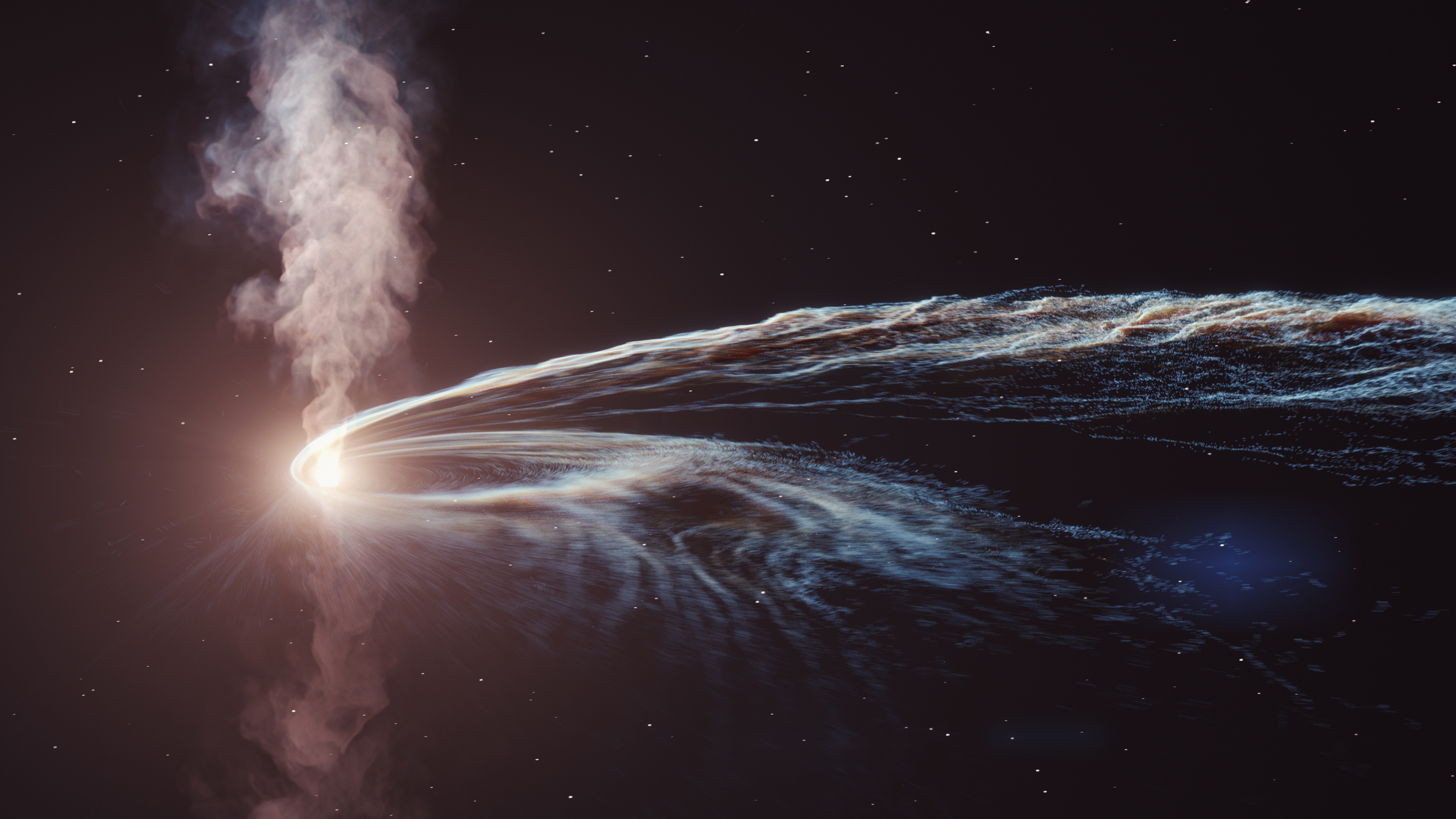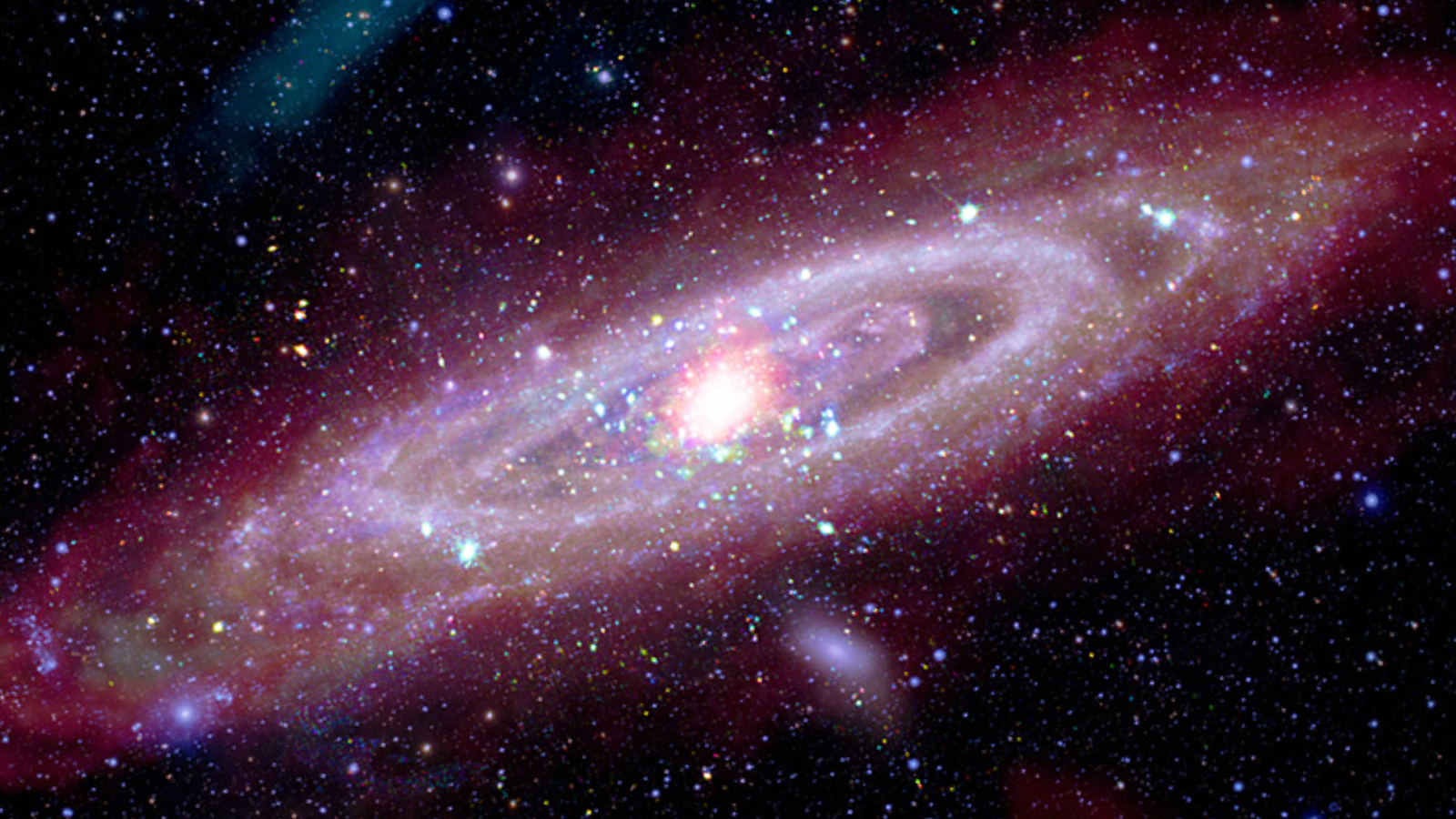Black hole is 'burping out' a 'spaghettified' star it devoured years ago
The aftermath of the star being "spaghettified" is like nothing astronomers have ever seen.

Three years after a black hole shredded and devoured a small star, the cosmic titan is lighting up the night sky with violent emissions as it burps out material from its messy stellar meal.
In October 2018, the black hole — located in a galaxy 665 million light-years from Earth — was observed tearing up a star that had wandered too close. The event itself wasn't surprising to astronomers, who often observe these violent encounters between stars and greedy black holes. These so-called tidal disruption events (TDEs) happen when objects such as stars approach black holes and the massive gravitational influence they encounter generates tidal forces that stretch the star in one direction while squashing it in the other direction, thus "spaghettifying" the stellar body.
As this spaghettified material falls onto the black hole, it heats up and generates a flash of light that astronomers can spot from millions of light-years away. Occasionally, the black hole spits some of this stellar material back out into space. In other words, black holes are messy eaters.
Related: Cosmic crime scene reveals how black holes turn stars into 'spaghetti'
However, there's something unusual about this TDE, designated AT2018hyz: Despite not having feasted on anything since this small star, which has about one-tenth the mass of the sun , the black hole is now spewing the material from its last meal.
"This caught us completely by surprise — no one has ever seen anything like this before," Yvette Cendes, an astronomer at the Harvard & Smithsonian Center for Astrophysics who led the research, said in a statement. "It's as if this black hole has started abruptly burping out a bunch of material from the star it ate years ago."
Cendes and her team determined that this material is being ejected from the black hole at around 300 million mph (480 million kph) — about half the speed of light. For comparison, TDEs usually spit out this material at about 10% the speed of light.
Breaking space news, the latest updates on rocket launches, skywatching events and more!
Why it took so long for this black hole to burp out its last meal is also a mystery.
"This is the first time that we have witnessed such a long delay between the feeding and the outflow," study co-author Edo Berger, an astronomy professor at Harvard University, said in the statement.
Bright radio "burps"
The astronomers spotted this event as they were searching for signs of TDEs that have occurred over the past few years. Data they collected in radio waves with the Very Large Array in New Mexico showed that this black hole had mysteriously burst back to life in June 2021. This finding encouraged them to investigate AT2018hyz further.
"We applied for Director's Discretionary Time on multiple telescopes, which is when you find something so unexpected, you can't wait for the normal cycle of telescope proposals to observe it," Cendes said. "All the applications were immediately accepted."
The team studied the event in multiple wavelengths of light and with a range of telescopes — including the VLA, the MeerKAT radio telescope in South Africa, and the Atacama Large Millimeter/submillimeter Array in Chile — and found that the most striking observations of AT2018hyz were in radio frequencies.
"We have been studying TDEs with radio telescopes for more than a decade, and we sometimes find they shine in radio waves as they spew out material while the star is first being consumed by the black hole," Berger said. "But in AT2018hyz there was radio silence for the first three years, and now it's dramatically lit up to become one of the most radio-luminous TDEs ever observed."
Study co-author Sebastian Gomez, a postdoctoral fellow at the Space Telescope Science Institute in Baltimore, studied AT2018hyz in 2018 with visible-light telescopes such as the 1.2-meter (3.9 feet) telescope at the Fred Lawrence Whipple Observatory in Arizona. At that time, he had considered this TDE unremarkable.
"We monitored AT2018hyz in visible light for several months until it faded away, and then set it out of our minds," Gomez said in the statement.
Now, the team will investigate whether the delay between feeding and emitting is unique to AT2018hyz or if it's a more common event that astronomers have missed.
"The next step is to explore whether this actually happens more regularly and we have simply not been looking at TDEs late enough in their evolution," Berger said.
The team's work was published Oct. 11 in The Astrophysical Journal.
Follow us on Twitter @Spacedotcom or on Facebook.
Join our Space Forums to keep talking space on the latest missions, night sky and more! And if you have a news tip, correction or comment, let us know at: community@space.com.

Robert Lea is a science journalist in the U.K. whose articles have been published in Physics World, New Scientist, Astronomy Magazine, All About Space, Newsweek and ZME Science. He also writes about science communication for Elsevier and the European Journal of Physics. Rob holds a bachelor of science degree in physics and astronomy from the U.K.’s Open University. Follow him on Twitter @sciencef1rst.
